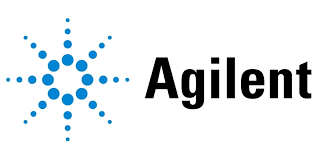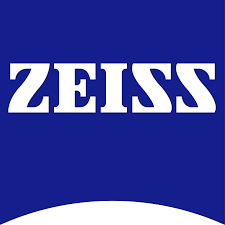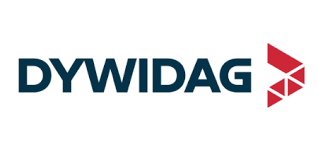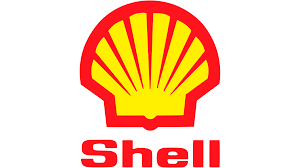Lipstick Market Report
Published Date: 02 June 2025 | Report Code: lipstick
Lipstick Market Size, Share, Industry Trends and Forecast to 2033
This report provides a comprehensive analysis of the lipstick market, covering market trends, size, segmentation, and regional insights. It includes detailed forecasts and insights from 2023 to 2033, offering a thorough understanding of both current conditions and future possibilities in the industry.
| Metric | Value |
|---|---|
| Study Period | 2023 - 2033 |
| 2023 Market Size | $18.20 Billion |
| CAGR (2023-2033) | 5.2% |
| 2033 Market Size | $30.55 Billion |
| Top Companies | L'Oréal, Estée Lauder, Revlon, Maybelline |
| Last Modified Date | 02 June 2025 |
Lipstick Market Report (2023 - 2033)
Lipstick Market Overview
Customize Lipstick Market Report market research report
- ✔ Get in-depth analysis of Lipstick market size, growth, and forecasts.
- ✔ Understand Lipstick's regional dynamics and industry-specific trends.
- ✔ Identify potential applications, end-user demand, and growth segments in Lipstick
What is the Market Size & CAGR of Lipstick market in 2023-2033?
Lipstick Industry Analysis
Lipstick Market Segmentation and Scope
Tell us your focus area and get a customized research report.
Lipstick Market Analysis Report by Region
Europe Lipstick Market Report:
The European lipstick market is similarly vibrant, anticipated to grow from USD 5.83 billion in 2023 to USD 9.79 billion by 2033. The trends here include a strong push towards organic and eco-friendly products, along with a rich variety in product offerings.Asia Pacific Lipstick Market Report:
The Asia Pacific region is witnessing robust growth in the lipstick market, with estimated sizes of USD 3.41 billion in 2023 and USD 5.73 billion by 2033. Factors such as rising disposable incomes, increasing urbanization, and the influence of Western beauty trends are propelling market expansion in countries like China and Japan.North America Lipstick Market Report:
North America dominates the lipstick market, starting at USD 6.57 billion in 2023 and expected to reach USD 11.03 billion in 2033. This region sees high demand for premium products and innovations, along with a strong online retail presence.South America Lipstick Market Report:
In South America, the market is smaller with a size of USD 0.03 billion in 2023, projected to grow to USD 0.05 billion by 2033. The growth is driven primarily by rising beauty consciousness and increasing accessibility to beauty products in urban areas.Middle East & Africa Lipstick Market Report:
The Middle East and Africa market is expected to grow from USD 2.35 billion in 2023 to USD 3.94 billion by 2033. The increasing influence of social media and beauty trends are significant drivers here, alongside demographic shifts that encourage beauty product use.Tell us your focus area and get a customized research report.
Lipstick Market Analysis By Product Type
Global Lipstick Market, By Product Type Market Analysis (2024 - 2033)
The lipstick market is principally segmented by product type, featuring bullet lipstick, liquid lipstick, lip gloss, and lip balm. Bullet lipstick holds a significant market share, with sizes projected to rise from USD 9.39 billion in 2023 to USD 15.76 billion by 2033. Liquid lipstick is also gaining popularity, projected to increase from USD 4.53 billion to USD 7.61 billion during the period.
Lipstick Market Analysis By Formulation
Global Lipstick Market, By Formulation Market Analysis (2024 - 2033)
The formulations in the lipstick market consist predominantly of matte, glossy, and satin varieties. Matte lipsticks command the market with significant growth potential — from USD 11.38 billion in 2023 to USD 19.11 billion by 2033, while glossy variants remain popular among younger consumers.
Lipstick Market Analysis By Usage
Global Lipstick Market, By Usage Market Analysis (2024 - 2033)
The usage of lipsticks is primarily categorized into daily use and special occasions. Daily use products dominate the market, anticipated to grow from USD 16.11 billion in 2023 to USD 27.04 billion by 2033, while products for special occasions are projected to reach USD 3.51 billion from USD 2.09 billion.
Lipstick Market Analysis By Consumer Group
Global Lipstick Market, By Consumer Group Market Analysis (2024 - 2033)
The market is segmented by consumer demographics into teenagers, young adults, and adults. Teenagers form the largest consumer segment, growing from USD 11.38 billion in 2023 to USD 19.11 billion by 2033. Young adults also represent a significant segment, with expectations for growth from USD 4.23 billion to USD 7.11 billion.
Lipstick Market Analysis By Distribution Channel
Global Lipstick Market, By Distribution Channel Market Analysis (2024 - 2033)
Distribution channels include retail stores, online retail, and direct sales. Retail channels dominate the market with sizes expected to grow from USD 11.38 billion to USD 19.11 billion by 2033. Online sales are also witnessing rapid growth, from USD 4.23 billion to USD 7.11 billion, reflecting the shift towards e-commerce.
Lipstick Market Trends and Future Forecast
Tell us your focus area and get a customized research report.
Global Market Leaders and Top Companies in Lipstick Industry
L'Oréal:
A leading global beauty company, L'Oréal offers a diverse range of lipsticks known for innovative formulations catering to various consumer needs.Estée Lauder:
Estée Lauder is renowned for its premium quality cosmetics, including its extensive line of luxurious lipsticks that attract a diverse clientele.Revlon:
Revlon is recognized for its bold and colorful lipstick offerings, often marketed towards a younger demographic with vibrant advertising campaigns.Maybelline:
Maybelline, a subsidiary of L'Oréal, is known for its trendy and affordable lip products, with strong appeal among younger and price-sensitive consumers.We're grateful to work with incredible clients.









FAQs
What is the market size of lipstick?
The global lipstick market size is projected to reach $18.2 billion by 2033, with a compound annual growth rate (CAGR) of 5.2% from 2023 to 2033. This growth reflects the increasing demand for diverse lipstick offerings across various demographics.
What are the key market players or companies in the lipstick industry?
Key players in the lipstick market include major cosmetic companies such as Estée Lauder, L'Oréal, Revlon, Coty Inc., and Procter & Gamble. These companies dominate the market with their extensive product lines and strong brand recognition.
What are the primary factors driving the growth in the lipstick industry?
The growth of the lipstick industry is driven by factors such as rising beauty consciousness, growing influence of social media, innovations in product formulations, and an expanding variety of product types catering to diverse consumer preferences.
Which region is the fastest Growing in the lipstick market?
The fastest-growing region in the lipstick market is expected to be North America, with market size increasing from $6.57 billion in 2023 to $11.03 billion by 2033. This reflects strong demand for innovative lipstick products along with a focus on brand loyalty.
Does ConsaInsights provide customized market report data for the lipstick industry?
Yes, ConsaInsights offers customized market report data for the lipstick industry. Clients can request tailored insights that cater to specific market niches, product segments, or geographical regions to meet their unique needs.
What deliverables can I expect from this lipstick market research project?
From the lipstick market research project, clients can expect comprehensive reports, detailed analysis of market trends and forecasts, competitive landscape assessments, and specific insights into consumer preferences and behavior in the lipstick segment.
What are the market trends of lipstick?
Current trends in the lipstick market include the rise of sustainable and vegan formulations, a growing preference for long-lasting and matte finishes, and the increasing popularity of online retail channels among consumers resulting in changing purchasing behaviors.
